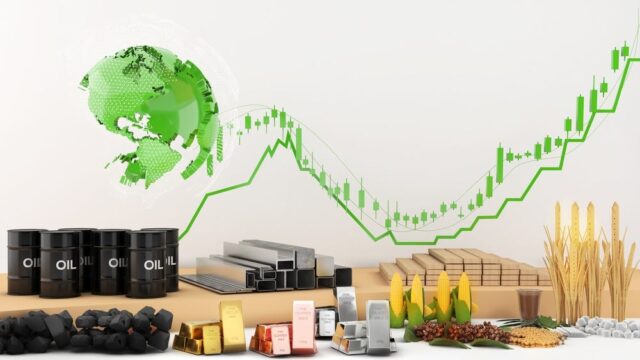To Get Free Real-Time Prices of Commodities Visit: https://pricevision.ai/
In today’s fast-paced world, the ability to accurately predict commodity prices is crucial for businesses and investors alike. One way to achieve this is by harnessing the power of Artificial Intelligence (AI) and Machine Learning (ML) for forecasting prices. In this blog post, we will delve into the fascinating world of commodity valuation and explore how AI and ML can be used to master it, with a special focus on sugar price prediction.
Commodities play a pivotal role in the global economy. From agriculture to energy and metals, these raw materials are the building blocks of various industries. Accurate commodity valuation is essential for several reasons:
● Risk Management: Businesses that rely on commodities need to manage price fluctuations to protect their profit margins.
● Investment Decisions: Investors in commodities need reliable price forecasts to make informed decisions.
● Supply Chain Optimization: Manufacturers and distributors must anticipate price changes to optimize their supply chains and avoid shortages or overstocking.
● Policy and Regulation: Governments and regulatory bodies often use commodity price data to formulate policies and regulations.
Commodity valuation is inherently challenging due to several factors:
● Market Volatility: Commodity markets can be highly volatile, with prices subject to sudden and unexpected shifts.
● Global Factors: Prices are influenced by a myriad of global factors, including weather events, geopolitical tensions, and economic conditions.
● Limited Data: Historical data for some commodities may be sparse, making traditional forecasting methods less effective.
Given these challenges, AI and ML offer promising solutions for improving the accuracy of commodity valuation.
The first step in using AI for commodity valuation is to collect and preprocess data. This includes historical price data, supply and demand statistics, and relevant news and events. ML algorithms require clean and structured data to produce accurate forecasts.
Feature engineering involves selecting and transforming relevant data features to improve model performance. For example, in sugar price prediction, features like weather conditions, sugar production, and import/export data can be crucial inputs for the model.
Choosing the right ML model is critical for accurate forecasting. Time series models like ARIMA and state-of-the-art deep learning models like recurrent neural networks (RNNs) and Long Short-Term Memory (LSTM) networks are commonly used for commodity price prediction. The choice of model depends on the nature of the commodity and the available data.
ML models are trained on historical data and validated to ensure their accuracy. The model learns patterns and trends from the historical data, allowing it to make predictions on future prices.
Commodity markets evolve over time, so it’s essential to update and retrain models regularly. Incorporating the latest data and adjusting model parameters can help maintain accuracy in price forecasts.
Let’s take a closer look at how AI and ML can be applied to sugar price prediction, a commodity with a history of price volatility.
Historical sugar price data, along with relevant factors such as sugar production, weather conditions, and sugar-related news, are collected and preprocessed. The data is cleaned, missing values are handled, and features are engineered to create a suitable dataset.
For sugar price prediction, a Long Short-Term Memory (LSTM) neural network is chosen as the ML model. LSTM networks are well-suited for time series forecasting because they can capture long-term dependencies in the data.
The LSTM model is trained on the historical sugar price data, and its performance is evaluated using validation data. The model learns to identify patterns and trends in the data that influence sugar prices.
To ensure the model remains accurate, it is updated regularly with new data. This allows it to adapt to changing market conditions and make more precise predictions.
Using AI and ML for commodity valuation offers several benefits:
AI models can analyze vast amounts of data and identify complex patterns that may be challenging for humans to detect. This leads to more accurate price forecasts.
AI models can process and analyze data in real-time, providing up-to-the-minute insights into commodity markets. This is particularly valuable in rapidly changing markets.
Accurate price forecasts help businesses and investors manage risk effectively, reducing potential financial losses.
AI-driven insights enable data-driven decision-making, allowing businesses and investors to make informed choices about their commodity-related activities.
Automating the valuation process with AI can save both time and resources, as it eliminates the need for manual analysis and guesswork.
While AI and ML hold great promise for commodity valuation, there are some challenges and limitations to consider:
The accuracy of AI models depends on the quality and availability of data. Inaccurate or incomplete data can lead to unreliable forecasts.
Complex AI models may require significant computational resources and expertise to implement and maintain.
ML models can overfit to historical data, making them less effective at predicting future prices. Regular model evaluation and adjustment are essential to mitigate this risk.
Commodity markets are influenced by a wide range of factors, and unexpected events can disrupt price trends. AI models may struggle to account for extreme events.
Mastering the valuation of commodities with AI and ML, including the use of ML for forecasting prices, represents a powerful tool for businesses and investors. By harnessing the capabilities of AI, you can improve the accuracy of commodity price predictions, enhance risk management, and make more informed decisions.
As we’ve seen in our case study on sugar price prediction, AI-driven solutions can adapt to the complexities of commodity markets and provide real-time insights. However, it’s crucial to be mindful of the challenges and limitations associated with these technologies and continuously update and refine your models to stay ahead in the ever-evolving world of commodity valuation.
In an era where data is abundant, leveraging AI and ML is not just an option; it’s a necessity for those looking to excel in the world of commodities. So, embrace the power of AI, and let it guide you towards mastering the valuation of commodities, one forecast at a time.




